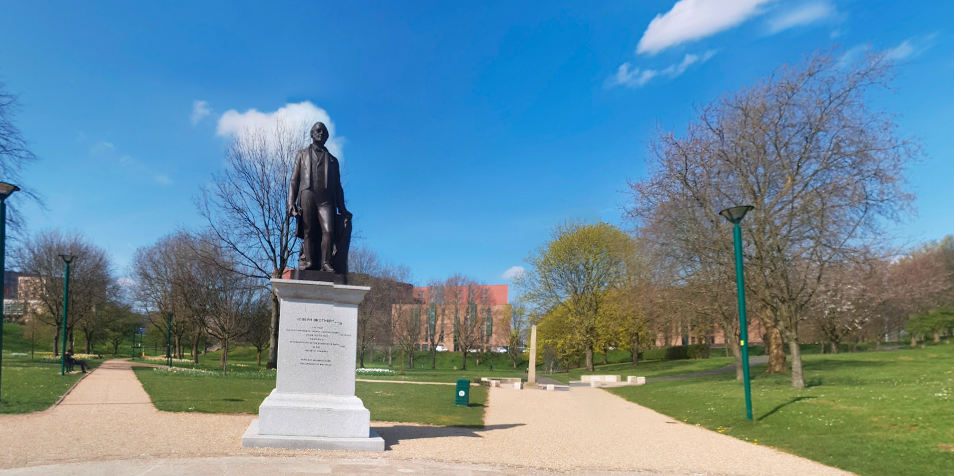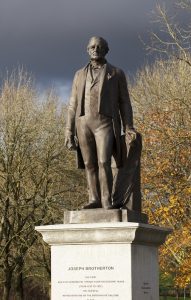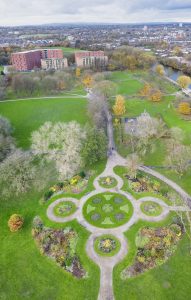
Peel Park has been recognised by Historic England for being one of the first free municipal public parks in a major industrial city, dating back to 1846.
The park has been listed at Grade II on the national register, together with a statue of MP Joseph Brotherton, which has been listed at Grade II by the Department for Culture, Media and Sport.
This listing means that the park’s iconic history is now set to be better preserved.
Salford City Mayor, Paul Dennett, explains: “This is really welcome news that this important statue and our historically significant park have been entered onto the National Heritage List for England.
“What this means is that these two hugely important pieces of our city’s heritage are now protected for future generations to enjoy and discover.”
The listed 1858 statue of Joseph Brotherton MP, which stands within the park, portrays the MP in his “natural element” as a speechmaker, with a cotton bale and cloth depicting the source of Brotherton’s wealth.

The prominent campaigner championed causes including pacifism and free trade and chaired a committee set up in the 1840s to create suitable parks for the rapidly expanding population of the area.
Brotherton’s statue has substantial artistic merit of the work of the notable designer, Matthew Noble, who acted as Salford’s sculptor in residence.
Mayor Paul Dennett added: “Joseph Brotherton is such an important and iconic figure in Salford’s history and his legacy still very much reverberates and shapes the city and its thinking today, along with being a source of inspiration internationally – certainly assisting in putting the city of Salford on the map!
“He was Salford’s first Member of Parliament, giving locals a voice nationally, and through his reformist thinking, Christian faith and drive to create a fairer society for all, his values, beliefs, ethos and approach to life remains a blueprint that inspires people, while also highlighting the importance of history in the march of time as we look to the future.”

The park’s historic value is heightened by its association with the artist LS Lowry, who trained in the neighbouring Peel Building and featured the park in a number of his paintings and drawings.
Planned to be accessible to all, with a focus on play, sport, and promenading, Peel Park showcases visionary design elements that are of its time. The park’s design by Joshua Major, a nationally recognised landscape gardener perhaps adds a layer of distinction to its heritage.
The lower park of Peel Park retains the original design features, with lawns defined by tree-lined paths, areas for play and sport, and beds and paths dating back to 1851.
Peel Park’s significance is further enhanced by its close relationship with listed buildings, such as Salford Museum and the Peel Building and its historical connection to Queen’s Park and Philips Park in Manchester, which were together the first free municipal public parks in a major industrial city.
The decision to add the park and statue to the National Heritage List for England follows extensive restoration work carried out by Salford City Council, with the statue of Joseph Brotherton returned to its original place in 2018.
Find out more information on the history of the park here.
Featured image taken from Google Maps, Scott Roberts.















Recent Comments